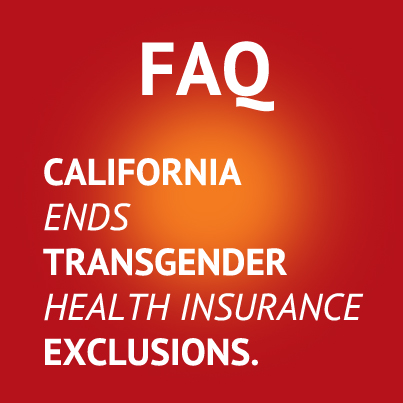Source(google.com.pk)
Health Insurance Broker Information
In a recent survey, top ranking PEO executives offered up their opinions on the Affordable Care Act (Obamacare) and what will be the reaction of employers. The first opinion from PEO leaders on this matter is devised from the fact that some companies that currently provide insurance are being hit with huge premium increases. Before Obamacare, some clients had been receiving modest increases but now as a result of “community rating”, which is required by the ACA, premium increases have skyrocketed. The result of this could cause some employers to drop health coverage altogether and for others not to offer it.
Another thought is that some companies will provide coverage but they will have to cut wages to help pay the increased costs. Some are finding that Obamacare is just “too complex” and these companies will probably have to increase wages and allow their workers to procure coverage through the individual exchanges as some of employees might find better options in the individual exchanges if they qualify for a subsidy.
The final opinion from the PEO execs is that many companies are revising their business structure to minimize or offset the increasing cost of insurance. Most companies haven’t made final decisions and some are still trying to find “loopholes” within the regulations. One scenario is to keep workers below the 30-hour weekly threshold requiring insurance. This means that many employees will lose hours and wages. Other companies are striving to stay below the 50-employee ceiling that triggers the insurance mandate. These companies are deliberately restraining expansion and that’s never a good strategy. All of this clouds the Obamacare promise of universal coverage. What matters for small and medium-size firms is the analysis between the gap of providing health coverage and the consequences of paying the tax penalties. The wider that gap becomes in addition to the “hassle factor” of being compliant, the more likely it is that companies won’t be able to provide insurance for their employees.
Source: The Washington Post
Opinion:
It seems clear that PEOs stand to gain plenty of new business as small to mid-sized businesses seek to avoid the additional administrative cost and headaches of dealing with Obamacare.
Historically, when hard markets occur or when comp carriers drop a PEO's policy, "fake" workers' comp providers seem to pop-up like weeds after a spring rain. Unfortunately, this seems to be a consistent trend within the industry. As Work Comp markets dry up and coverage costs rise, the temptation can lure some PEO operators to the dark side. PEO Agents and Brokers need to be on guard against questionable or downright fake work comp carriers for PEOs.
Here are a few of tips for you to bear in mind as you search for PEO solutions for your clients:
Be aware if the PEO makes a change in carriers.
Check out the WC Carrier's status and rating. Don't fall for questionable rating services. AM Best is the "best" (if not only) source. ( www.ambest.com ).
Confirm that your PEO partners are licensed within the states they do business.
The LL Roberts Group takes great pride in our due diligence processes, and PEO partner relationship management practices, as well as our "finger on the pulse" of the PEO Industry. Our Agents and Brokers can rest easy at night knowing that we are constantly monitoring the market place and our affiliates. If you have any questions or suspicions about a current or potential PEO partner or their carriers please feel free to call us. If you believe you have discovered a case of "Fake Comp" please let us know as well. We'll certainly be able to offer some insight on your concerns. During the first month of grace period when the premium has not been paid, the insurance companies must continue to pay claims incurred by the patient. During the second month if the patient is still delinquent the insurance company can pend any further claims. After the third month if the insured has not paid the premium, the insurance company can terminate the coverage.
In the event that the premium is not paid during the grace period and the policy terminates backwards 90 days, doctors and other healthcare providers in California will have to go after the patient to collect payment for all outstanding claims.
Essentially this means there can be a 60-day period during which a medical provider who accepts exchange-level health plans is not going to be sure if or when he/she may ever get paid for the medical services provided "Fifty years ago, if you wanted to buy a house, you found someone willing to sell, and the two of you worked out all the details. If you needed a mortgage, you got it. If you needed a lawyer to draw up the deed, then you hired one.
But over the years, particularly as credit problems started to arise and the legal requirements got tougher, we began to see real estate brokers establish an expertise as the go-between – between the seller and the buyer. These brokers have a much larger bank of knowledge than someone who only buys or sells a home two or three times in a lifetime. They understand the process, know home values, mortgage options, negotiation – they know far more about everything related to the transaction of buying or selling a home than most of us do. Today, very few home transactions take place without a real estate broker to orchestrate them.
Unfortunately, the healthcare system (no matter what country you live in) has become so tenuous that patients really do need a go-between to help them navigate. Doctors can't do it alone anymore, nor can nurses. Without that expert to step in and shepherd us, we patients may succumb not to our disease or condition, but to the problems in the system that is intended to help us."
In order to help people cope with the system I am introducing the the concept of empowered patient, this consists of 3 characteristics:
Knowing the bureaucracy: in andalucía this means the SAS web page, or salud responde for more specific queries Now, we know it's more complex than that. That many everyday things (pathways*) are not regulated, so the personnel generates their own pathway.... usually with their convenience at heart, not the patients. With an advocate you have somebody that has worked inside the systems, and know all of it's tricks: this is not a small thing, this is priceless!
*pathways are roads that patients with the same condition should follow, usually they are done between the chiefs of the services involved but if it is not done, people invent one, it can be good or bad
An example: a friend of mine broke her ankle, in the costa del sol they they fittted the cast and told her that she should go to the CARE mijas to have it removed, but that she would have to go first to ask for an appointment and then to get it off. My friend of course, couldn't walk and she lives far away from the CARE. She hired a taxi and she did all of that..fuming. A patient advocate could have first spoken to the nurse and explain the situation to see if : they could call themselves or if they can remove it themselves in the costa del sol, much more nearer to the patient's home. If this didn't work, she could have threatened with a letter of complaint, if this also didn't work, she would have written the letter. and all of this time the difficult person is the advocate, not the patient.
knowing medicine-becoming an expert in YOU. this means that you have to research your conditions, you have to know how does your body works, it's the difference between the student that read the lesson beforehand an the other that just stumbled into the room! there is a big difference between the two!.
The problem is that the web is full-too full- of medical information, and lots of them are just plain wrong mumbo-yumbo trying to pass off as medicine.
How do you recognize the two?, this is where a patient advocate is invaluable. Not only to tell you where to read, but as you know when one is sick the last thing y one wants to do is learn about the complications of the condition!. So the advocate can do the research herself, summarize and explain it to do, in a way , educate you in your condition with the best information.This will be done in a easy language so there is a demystification of medical jargon.
Became a marketing expert, and now you should be screaming WHAT!!!!!!, here's the thing: a) the doctor's time is very scarce, so you have to convey your message in a compelling and succinct way and b) there are cuts being done left and right, so you'll need to convince the Dr that you are the one that absolutely needs those resources!.
to do that you have to prepare for the consultation as for an exam (yes....)
never getting the last appointment,
having your medical history correctly organized, I have a personal hypothesis that people with papers all mixed in a folder have worse outcome that those that have it all organized (hey! I have my opinions too!),
setting a GOAL for the consultations: what do you want to take out it?.
preparing your message. This is another aspect that the advocate can help you coaching to get your message as it should be: short (we doctors have a very short attention span...)with the facts and no elucubrations or theories that can, even unconsciously guide the doctor in the wrong direction
So, in this step you have received all of the information from your advocate, and you know how to relay it to the doctor.
Sometimes, even with all of the preparations, the doctor refuses to "grant" you your goal, for example you wanted a referral to endocrinology, and he refused. Here the patient advocate can be assertive for you, because it has been widely studied that when we are sick we are disempowered. Also, you don't want to get the label of the "difficult patient!!", so it's great to have somebody else.
A word of caution: patient advocates are not miracle workers we will do that we can to help you, but we do not succeed 100% if the time. This has to be very clear, no strategy is failsafe and sometimes we just cannot get what we need. in that moment, talk to your advocate (in civil terms) what are your other options...Gov. Pat Quinn is reviewing a bill passed by the Illinois General Assembly that critics say would limit the advice consumers will receive while picking policies on the state's health insurance exchange.
The new law was supported by some insurance groups, which fear brokers' commission-based business will be eaten away by the online exchange, which is set to open for enrollment on Oct. 1 for coverage required on Jan. 1.
The legislation, approved in May and sent to the governor on June 26, defines the role of “navigators,” government-funded positions created under the federal Affordable Care Act. Working through community groups, navigators are intended to help individuals and small businesses as they sort through their options on the exchange. Under the proposed law, navigators could distribute “fair and impartial” information but would be prohibited from recommending or endorsing a particular health plan.
“If we didn't have this type of regulation, it has the potential to render our license somewhat meaningless,” said Phil Lackman, vice president of government relations for Springfield-based Independent Insurance Agents of Illinois.
The pending legislation also prohibits navigators from accepting compensation based on whether someone enrolls in or buys a particular plan, which is traditionally how brokers are paid, in an effort to prevent navigators from improperly steering customers to one carrier or plan over another.
Illinois is among more than a dozen states that have enacted laws or have pending legislation that would restrict what navigators do, according to experts at the Georgetown University Center on Health Insurance Reforms.
“A consumer should want competent advice,” said state Sen. William Haine, a Democrat from downstate Alton and a sponsor of the bill. “They shouldn't want a laissez-faire attitude toward competency, just as we do not want people who have little knowledge of the law giving legal advice.”
ARE OTHER STATES LAWS LIKE ILLINOIS?
Legislation like the Illinois bill is likely to create confusion as consumers are shuffled between brokers, navigators and other government resources, experts say.
“That makes what's supposed to be a pretty seamless experience full of cracks,” said Christine Monahan, a senior health policy analyst at the Center on Health Insurance Reforms.
Navigators will likely target low-income communities that insurance brokers typically don't serve, yet the law means that low-income consumers might not receive the same information that more affluent shoppers could obtain.
“Once again it will be up to the social sector to help people navigate because of how the legislation is trying to tie people's hands on this,” said Barbara Otto, CEO of Health & Disability Advocates, a Chicago nonprofit.
The bill would also apply to so-called in-person assisters, who essentially perform the same function as navigators but are funded differently.
The U.S. Centers for Medicare & Medicaid Services will choose navigators in Illinois as part of a $2.3 million local effort. In-person assisters will be funded through $28 million in federal money to be awarded by the state to community organizations.
The state plans to announce those grants this month, a spokesman for the Illinois Department of Insurance said. CMS anticipates naming navigators in August, according to the federal agency's website.
The pending legislation allows navigators to refer customers who acknowledge having an existing insurance broker to that person, except in some circumstances, including if the provider is not authorized to sell plans on the exchange. The past is gone forever - When it comes to Brokers working with Employers on Employee benefits plan design, PPACA/Obamacare has changed the game! A the major component, Health Insurance has an entirely new set of rules and choices. Brokers who are not changing will become obsolete!
Its time for Brokers to quit pondering the future of reform and worrying about lost commissions and renewals. They need to begin offering Employers and Employees Strategies and Solutions for dealing with Reform! The Brokers business and financial future depends on creating new paradigms.
2014 is on the way! - With only 4 months to go until the traditional enrollment periods begin in October for a January 1st effective date, many Employers - and Brokers - have no idea what to do. Reading, or listening to, the barrage of media is enough to scare an owner to death. Just look at these Headlines:
ChiefExecutive.net - "Can CEOs Find Relief From Skyrocketing Health Costs?"
The Wall Street Journal "ObamaCare's Health-Insurance Sticker Shock"
The Washington Free Beacon - "Obamacare to Increase Premiums Nearly 100 Percent"
The good old days - In the past Employers were accustomed to a Broker stopping-by, gathering information, discussing price increases, and offering ideas about cost-sharing, higher deductible, and other bandage solutions. This year PPACA - and the mountain of HHS, DOL, and IRS guidelines - combined with the real threat of Taxes, Penalties, and Fees - presents a new, ongoing set of problems that have Employers searching for compliant Strategies and Solutions. To survive Brokers need to be at the Employer's side to assist in this time of confusion and need!
New competition - To take advantage of this disruption, competing Brokers - as well as PEOs, TPAs, Payroll Companies, Enrollment Companies, and Technology Companies, etc. - are knocking on Employer's doors - actual or virtual - to steal business by offering options for dealing with PPACA/Obamacare. They are differentiating themselves in the Marketplaces with new Starategies and Solutions. As Nelson Griswold pointed out in the Employee Benefit Advisor, the competitors "Turn PPACA compliance into profit". In addition, the traditional service providers - who were in the Brokers' ally in the past - are becoming commission based competitors. They are offering Voluntary and Ancillary plans for the lucrative commissions. Unlike Brokers who are still worrying about their lost Health Insurance commissions and renewals, the Service Providers are discounting their services to gain the Voluntary /Worksite Commissions. What's a Broker to do?
Get Moving - Schedule a meeting with current and potential Clients and offer them Strategies and Solutions. Here are 25 ways to get started:
Answer questions and address concerns they have about PPACA/Obamacare.
Make sure their current plan documents are compliant. Help them avoid hefty Penalties, Taxes, and Fees.
Run through a timeline for Reform Implementation.
Help calculate the Full Time (FT) and Full time Equivalent Employees (FTEs).
Explain how Reform differentiates between Small and Large Employers.
Determine if they qualify for Tax Credits as a small business? - Help them with the paperwork?
Determine if their Employees qualify for Subsidies?
Explain the Play or Pay options. Help determine what is best for them and their Employees.
Review the Penalties, Taxes, and Fees.
If they have a Union Negotiated Contract, help determine when they need to make changes to be compliant?
Explain Self-Funding as an alternative to a Fully Insured Plan? If appropriate, assist in selecting a TPA. Help select stop-loss coverage.
Explain Qualified Health Plans (QHP) and the Essential Health Benefits (EHBs). Most Employer's major concern this year will be the Health Plan, Compliance, and Cost!
Explain Exchanges (Marketplaces): Federal, State and Private.
Review the "Metallic Plans" - Bronze, Silver, Platinum, and Gold. Explain the "Actuarial Values".
Determine if introducing HRAs and/or HSAs combined with a High Deductible Health Plan (HDHP) is appropriate.
Assist in selecting a Carrier(s) for the Health Insurance Plan(s).
Suggest a "Menu" of Voluntary/Worksite and Ancillary Benefits utilizing the best-of-class of Carrier/Providers as well as Plans, Programs, and Services to meet the Needs and Price-Points of the Employees.
Suggest pre-taxing Employee contributions for qualified Plans under Section 125 and tax-advantaged Reimbursement Accounts. Assist them with the Model Plan Documents and in selecting the TPA?
Work with them in dealing with Part-Time and Seasonal Employee's.
Determine what Plans could be offered to the Part-Time and Seasonal Employees.
Discuss Defined Contribution (DC) as an alternative Benefit Plan Design to assist them in Budgeting Benefit Costs and in offering a Menu of Employee Benefit Choices.
Offer a Private Exchange Platform - utilizing emerging technologies - for offering the Benefit Plan Choices
Help design and implement the Education, Communication, Enrollment an Data Management Processes. Help co-ordinate the Enrollment.
If appropriate, discuss the Insurer's Medical Loss Ratios (MLRs) and the impact on your revenues - as well as your capacity to provide required services. Start discussing a shift to a partially "Fee Basis" Model!
Let them know you will be at their side to assist as new Guidelines and Regulations roll-out to keep them compliant and avoid Penalties, Taxes, and Fees - Become Their Trusted Advisor!



































